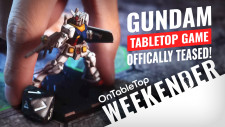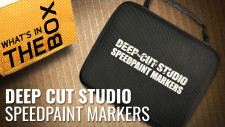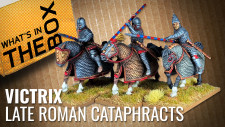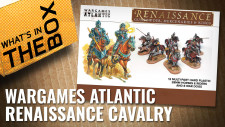Home › Forums › 3D Printing for Tabletop Gaming › What printer to choose.
This topic contains 4 replies, has 3 voices, and was last updated by ![]() blinky465 4 years, 9 months ago.
blinky465 4 years, 9 months ago.
-
AuthorPosts
-
March 19, 2020 at 4:03 pm #1498257
I’m looking to start with 3D-printing, but unsure what type of printer to consider. Been looking at a Creality Ender 3 Pro, and an Anycubic Photon S.
I know the resin printers have a superior quality, but concerned about the hassle with resin compared to filament. And the Photon is almost twice the cost, but I can save up the money without problem.
It will be mostly used for terrain, but I have a few STLs of miniatures I would like to print.
Anyone care to enlighten me?
March 19, 2020 at 4:45 pm #1498261March 19, 2020 at 5:10 pm #1498266@warzan has both Elegoo Mars and AnyCubic Photon so could give you a comparison between the two.
I’ve an AnyCubic Photon (not S) and went for that one for a couple of reasons – firstly, the dual rail thing that the S boasts about doesn’t *really* make that much difference (the z-axis doesn’t have any great pressure on it; it’s not like it’s a CNC carving machine, it just makes the print head go up and down!)
Secondly, the Photon (original) has a mature support community behind it, and the motherboard handles .photon files. This means that you can use third-party software like Chitubox. Many of the Photon S machines can only use .pws files (I believe later models can handle both .photon and .pws but you can’t be sure which type of machine you’re going to receive!)
I’ve printed open-lock compatible terrain pieces on my Photon (I’m currently building a cyberpunk diorama using them) and they look great – far better than the stuff I printed on my FDM machine.
I love my Photon – if I was buying again, I’d be sorely tempted by the Phrozen Mini; it has a mono masking screen and despite the so-called lower resolution – 1920 in the X rather than 2K) apprarently you get crisper prints off it, because the masking is much sharper.
The only trouble is there are no Phrozen Mini’s (at a reasonable price) available to the UK (if you see any, shout up, I’m very tempted!). In the meantime, I can’t recommend the Photon enough!
March 19, 2020 at 10:07 pm #1498345Another thing I’ve found is that, compared to my FDM printer, the setting up and maintenance of the resin printer is a doddle. There’s only one moving part – so no worrying about slack belts, getting the frame square, filament feeder jams, hot nozzle clogs etc.
Personally, I’ve found getting the print bed level a doddle – leveling the bed on an FDM printer and getting the perfect first layer nice and smooth can take hours (and still you sometimes need to give things a hand with a smudge of pritt stick or something to help it stick). Simply drop the head onto a piece of paper, when you can pull it out, but can’t push it back in, tighten up and you’re done!
I’d say about 95% of resin print failures are down to software, rather than an issue with the actual hardware (yes, there are some who have screen failures, shearing issues etc. but it’s mostly down to preparing the models properly in the first place). This is where the classic Photon has it over on the Photon S – because you can load your .photon file into the Photon File Validator software, which lets you look at every bitmap layer and identifies any that have “islands” (and also lets you do some basic image editing to correct them too). It saves files back out as .photon, not .pws so I don’t know if it’s suitable for use with the Photon S.
Like all 3d printers, if you spend a little time understanding *how the machine works* and adjusting your files to suit (rather than treat it like a plug-n-play inkjet that you just hit “print” on) you’ll get far better and more consistent results.
I’ve found FDM printing problematic and a bit hit-n-miss compared to resin printing.
I only ever really use my FDM printer for huge pieces (where I’m not so fussed about the quality or am going to cover it with a heavy filler-primer or spackle or something) or anything structural (for use with moving parts etc). Resin pieces can be quite brittle (and don’t stand up to being pushed and pulled around by things like servos and motors). But I’d favour resin printing over FDM for anything tabletop all day long!
March 19, 2020 at 10:20 pm #1498349As for hassle – yes, if you’re not careful, things can get sticky! Clean up after yourself. Keep everything clean and you’ll be ok. Yes, there is a bit of a “tang” when you’re printing (I’m loathed to say it’s a smell, because it’s barely noticeable after a few minutes) but the process I follow is:
Prepare the models (this is where 99% of the work is for me). Get the layers exactly right – a bit like spending some time in photoshop making your picture look the bomb before sending it to your printer.
Print. Leave overnight (I run my printer on a 5-hour mechanical timer overnight, so when the average print run at 4 hours has finished, the machine is switched off automatically). You can comfortably leave your minis hanging upside on the print bed for 24 hours or more (go out to work, deal with them the following evening).
Remove from the plate, drop into a jar of isopropyl alcohol.
CLEAN YOUR TOOLS! Get the left over resin off the bed, wipe down your blade/spatula (used to remove the prints off the bed). Give everything a quick wipe over with alcohol. You’ll use lots of kitchen roll. Buy plenty.
After about 10 mins in the IPA, I remove the supports from my mini (soaking in hot water for a few minutes removes any sticky residue and makes supports easier to remove).
“Cook” the cleaned minis under a UV nail cure lamp for about 10-15 minutes.
You’re done. Now you should use like normal resin minis and wash in warm soapy water, but I often forget and just hit them with Halfords matt primer and they’ve all turned out just fine (so far!)
Hassle? Well, it’s relative. I find cleaning up FDM-printed minis to be as much hassle – sanding, priming with filler, sanding to remove the high spots, cleaning up all the plastic dust and paint…. resin printing is just a different kind of hassle.
-
AuthorPosts
You must be logged in to reply to this topic.









































































